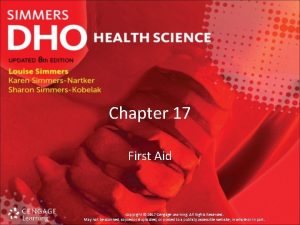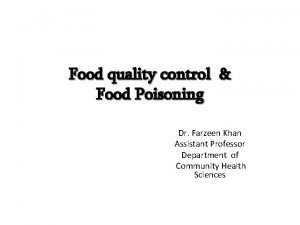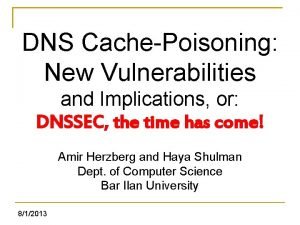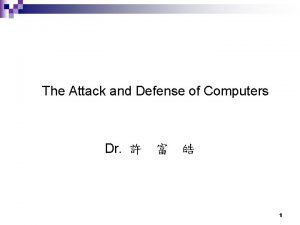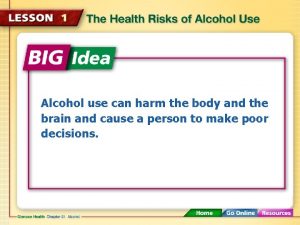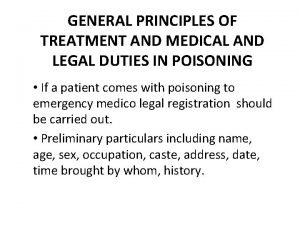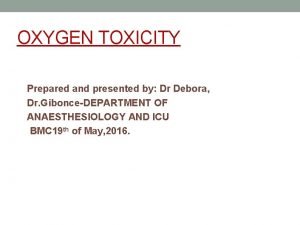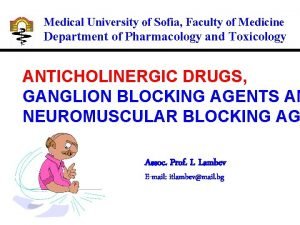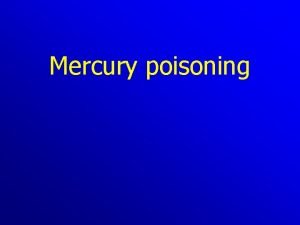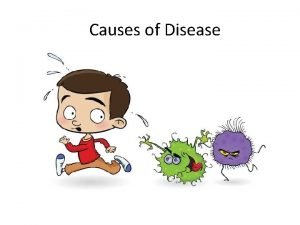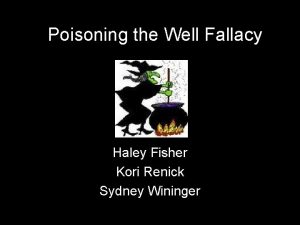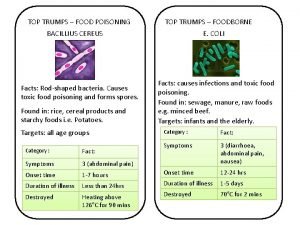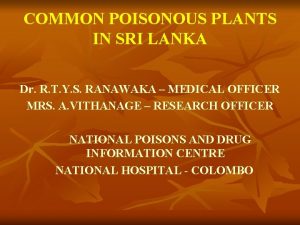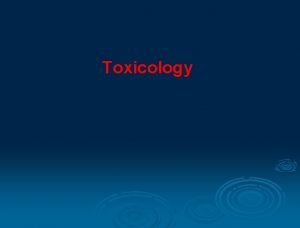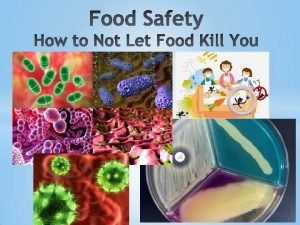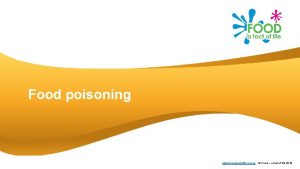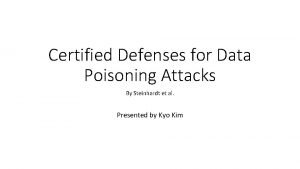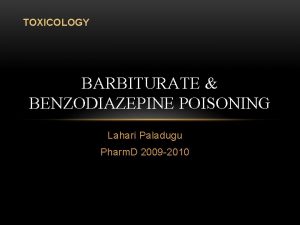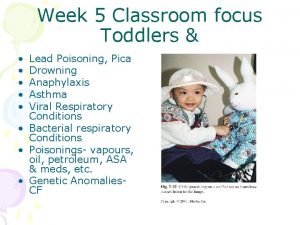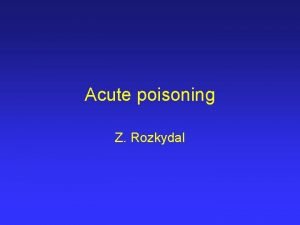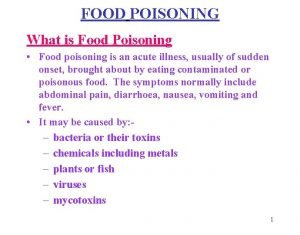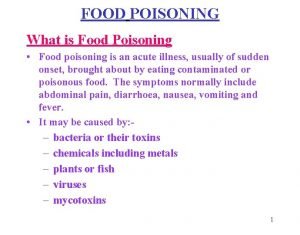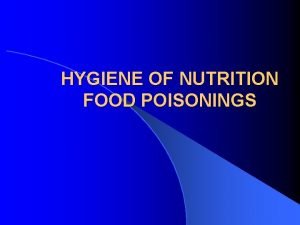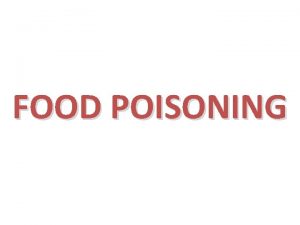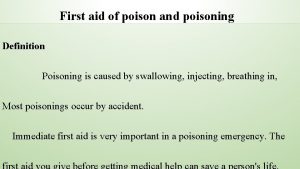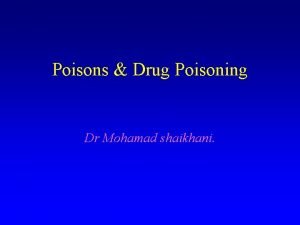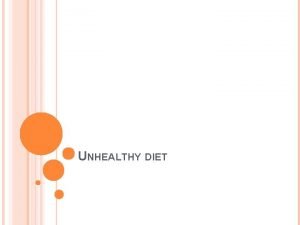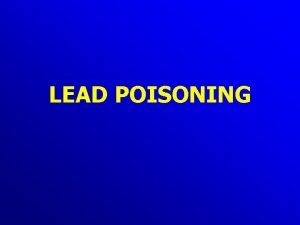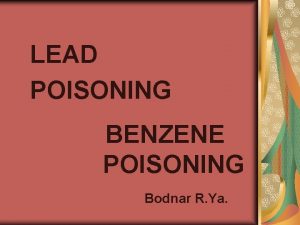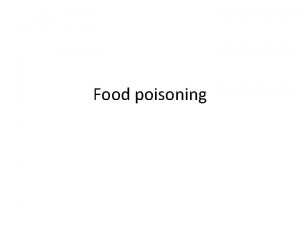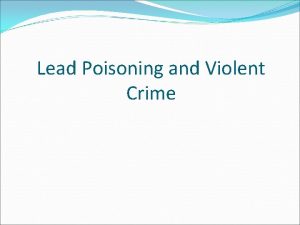First acute poisoning 1 Acute poisonings Acute poisoning






















- Slides: 22

First acute poisoning. 1

• Acute poisonings • Acute poisoning is a pathologic stage, which develops as a consequence of poison influence (which comes from the environment). Depending on the quantity of poison which come to the organism during the time unit all poisonings are divided to acute and chronicle. Acute poisoning is a chemical injury. 2

Poison - is any chemical compounding that can disrupt biochemical processes in the functions of body and vital organs, creating danger to the life. The main place among the causes of poisoning is ethanol (60%), carbon monoxide (15%), vinegar essence (16%), pharmaceuticals and pesticides (8 - 10%). Nowdays is increasing in fatal alcohol poisoning and its substitutes, and FOS. 3

• According to WHO, in the countries of western Europe the quantity of patients with poisoning is twice as big as the number of patients with MI and the lethality of this reason is larger then the lethality caused by infectious diseases and transport injuries. 4

• Nearly 500 of the most common poisoning agents are spreader in our environment. Acute poisoning is characterized with: Sudden beginning; brightness of the clinical presentation, grave complications. The consequences of the poisoning often depend on the time and quality of medical aid. 5

• Classification of poisonings according to their • • reasons and places of appearing: Accidental poisonings: industrial domestic medical mistakes Intentional poisonings criminal suicidal The quantity of acute accidental poisonings is nearly 80%, suicidal – 18 %, industrial- 2% of all cases. 6

• There are two stages of acute poisoning: • Toxigenic- poison is in the body in dose, which might cause specific influence (shock, asphyxia, coma gastro-intestinal bleeding). • Somatogenic- the poison leaves the organism, organs are injured and this stage lasts till the normalization of all body functions (pneumonia, sepsis). 7

• There are 4 ways for poisons to enter the body: • Inhalation • Through skin • Through intestine • Parenteral • Removal of poison might be conducted through: • Metabolism • Biotransformation • Renal and extra renal excretion • Those, who are trying to perform first medical aid, should pay particular attention to the details and circumstances of the poisoning. 8

• Immediate aid in case of • • poisonings: To stop the contact with the poison and usage of adsorbents. Antidotes. Symptomatic treatment. In case of poisonings with bases and acids vomiting might cause the burnt of the esophagus. That is why gastric sound is used. 9

• Forced diuresis is the most common method of conservative therapy in case of poisonings. Infusion therapy of electrolytes is also used in such cases. Acute ethanol poisoning The DL for clear alcohol is 12 g/kg, and mortal concentration in blood is from 5 to 6 grams. 10

Acute enteral ethanol poisoning • Alcohol intoxication has a leading position in the number of fatal consequences. Approximately 98% of them become in the prehospital phase, mostly because of the acute respiratory failure. Lethal dose of absolute alcohol is 4 - 12 g / kg and the lethal concentration in the blood 5 -6 g/liter. 11

The majority of received ethanol is rapidly absorbed in the intestines, and by 1. 5 years in the blood maximum concentration. Food supply in the stomach slows the absorption of alcohol. At the same time in the case of alcohol on an empty stomach or with a stomach illness rate of resorption increases. Ethanol is 90% oxidized in the liver. About 10% is excreted through the lungs and kidneys in unchanged form. 12

• Alcohol coma is divided into superficial and deep. • • The first is described with unconsciousness, inhibition or rising of muscular tonus, pathological eyes movements, trism e. t. c. The second means appearance of muscular atonya, hypothermia, acute inhibition of corneal, pupil and tendon reflexes. Another dangerous symptom is the violation of the external breathing. That is why artificial lungs ventilation is necessary (with aspiration or intubation if such are prescribed). Analgetics are not used from the point of view of possible convulsions. 13

• CO poisoning The source of CO in most cases is incomplete burning of organic substances. Main reasons are: Inhaling of exhaust gas in closed area. Inhaling of the smoke during the fire. 14

The serious poisoning of CO develops, when the level of carboxyhemoglobin is 60 -90%. Among the symptoms are: violation of external breathing, pathological reflexes, exotoxic shock, hyperthermia, hypoxic coma. 15

• Treatment. • 1. To take the patient from the area of the injury. • 2. To conduct air pat, inhalate Oxygen or use AVL if necessary. • 3. To use antidote: hyperbaric oxygenation (80 -90 min. 1 -4 times a day). 16

Gastric lavage 17

Methanol (methyl alcohol) – alcohol that contains admixture of acetone, acid-methyl ester, allylic alcohol and other substances. Purified methanol according to its sight and smell is different from ethanol. Lethal dose ~ 100 - 150 ml. 18

Symptoms of poisoning depends from the dose of adopted poison. • Mild poisoning (less than 50 ml methanol) occurs headache, nausea, rapid fatigue, pain in the epigastric area; • Moderate poisoning - severe headache, nausea, vomiting, then within 6 - 10 h may be a period of relative improvement, then again can be headache, dizziness, thirst, asthma, blurred vision - "butterflies before the eyes, unclear vision. The violation of view may be temporary or permanent, even can be complete blindness. 19

• Severe poisoning has the same beginning as the mild poisoning, there can be a period of relative improvement but then develops a coma. Sometimes coma can occur immediately after inhalation of poison. Breathing becomes superficial, developing acute cyanosis, pupils are dilated, arterial pressure decreases. Death occurs due to respiratory damage center on the background of severe metabolic acidosis. 20

Treatment • Flushing the stomach through the probe. • Ethanol as an antidote inside 100 ml of 30% solution, and then every 2 h for 50 ml - 5 times per night, in the following days 100 ml 2 - 3 times a day. In a case of coma - ethanol intravenous drip in a 5% rate of 1 ml solution (kg • day) 96% solution. To speed up the withdrawal of formic acid is injected at high folic acid. 21

Thank you for attention! 22
 Chapter 16:5 providing first aid for poisoning
Chapter 16:5 providing first aid for poisoning Chapter 17:3 providing first aid for bleeding and wounds
Chapter 17:3 providing first aid for bleeding and wounds Chapter 17:7 providing first aid for heat exposure
Chapter 17:7 providing first aid for heat exposure Common factors that can lead to food poisoning
Common factors that can lead to food poisoning Dns cache poisoning attack tutorial
Dns cache poisoning attack tutorial Seo poisoning wikipedia
Seo poisoning wikipedia Alcohol poisoning
Alcohol poisoning Neminath hubballi
Neminath hubballi General principle of treatment of poisoning
General principle of treatment of poisoning Early signs of oxygen toxicity
Early signs of oxygen toxicity Curare
Curare Mercury poisoning symptoms
Mercury poisoning symptoms Food poisoning cause
Food poisoning cause Poisoning the well
Poisoning the well Food top trumps
Food top trumps Kaneru gedi
Kaneru gedi Gamaxin powder poisoning
Gamaxin powder poisoning Food poisoning
Food poisoning Symptoms of food poisoning
Symptoms of food poisoning Certified defenses for data poisoning attacks
Certified defenses for data poisoning attacks Satirical argument
Satirical argument Temazolam
Temazolam Subcostal retractions
Subcostal retractions


